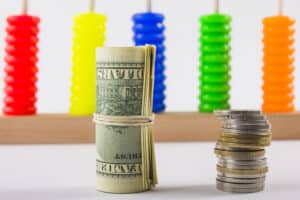Many people who want to improve their financial situation face a dilemma that seems to have no way out:
Should I pay off my debts or invest first?
The truth is there’s no single answer for everyone. But there is a smart way to make this decision depending on your case.
Today, I’ll show you how to leave financial stress behind and take control—without falling into the trap of “all or nothing.”
1. Breaking the Myth: It’s Not Always “One or the Other”
Thinking you must pay off all your debts before investing could delay your growth for years.
On the other hand, investing without managing your debts may bring more anxiety than freedom.
The key is to find balance—and that starts with understanding your starting point.
2. Evaluate the Type of Debt You Have
Not all debts are the same. Some deserve more urgency than others.
✘ “Bad” debts:
-
Credit cards
-
Personal loans with high interest rates
-
Minimum payments that drag on endlessly
These grow quickly and drain your income.
✓ “Acceptable” debts:
-
Student loans
-
Mortgages
-
Loans with reasonable rates
These are long-term and manageable, but they must be kept under control.
👉 If most of your debt has high interest, it’s best to prioritize repayment before investing aggressively.
3. Invest Even if It’s a Small Amount (With Intention)
Even while paying debt, starting the habit of investing—even with small amounts—can be a game-changer.
Why?
-
It builds financial discipline.
-
It keeps you focused on the future.
-
Your money starts working, even on a small scale.
Example: If you pay $300 toward debt, you could set aside $30 for an automatic investment.
It’s not about the amount—it’s about strategy and consistency.
4. Build Your Emergency Fund First
Before focusing on formal investments, ensure you have a safety net for emergencies.
An emergency fund keeps you from falling back into debt during a crisis.
-
Minimum goal: 1 month of essential expenses.
-
Ideal goal: 3 to 6 months of expenses.
Even with debt, gradually saving in a separate fund will give you peace of mind and more freedom of choice.
5. Combine: Pay Smart + Invest Strategically
The secret is not to choose extremes, but to adopt an integrated vision.
While reducing debt:
-
Negotiate lower rates.
-
Prioritize high-interest payments.
-
Automate minimum payments.
While investing:
-
Choose low-risk, accessible instruments.
-
Consider policies with cash value.
-
Learn about tools with tax advantages.
6. Work With a Financial Mentor (and Avoid Emotional Decisions)
Emotions can sabotage this process: guilt for having debt, fear of investing, anxiety about the future…
That’s why having a professional guide who understands your context is so valuable. They can help you build a sustainable plan instead of making impulsive choices.
You don’t have to solve it all today. Every small step moves you away from financial chaos and closer to freedom.
You don’t always need to pay off everything before investing.
The key lies in:
-
Evaluating your debt.
-
Starting to invest gradually.
-
Building an emergency fund.
-
Combining smart repayment with strategic investment.
And if you need clarity, schedule a consultation today—we can design a realistic, sustainable financial plan together.
Remember: It’s not about perfection, it’s about consistent progress.
🟩 Meta Description (SEO, <156 characters):
Pay off debt or invest first? Discover 6 practical keys to decide wisely, reduce financial stress, and move closer to your financial freedom.



